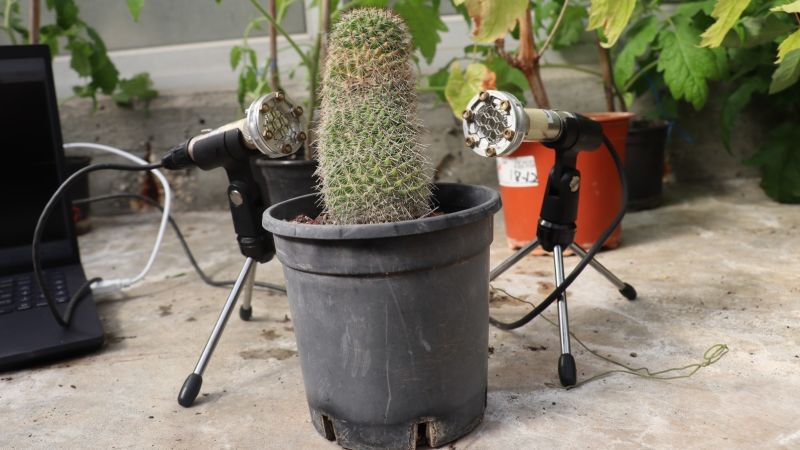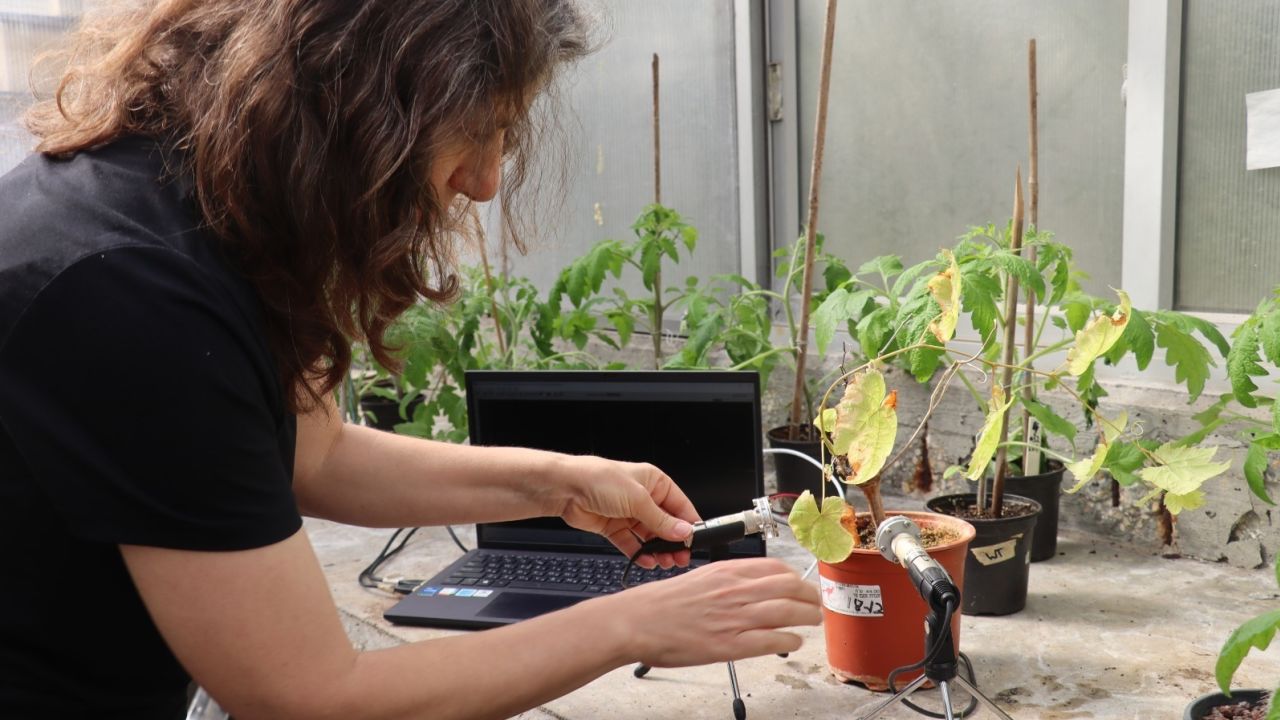
Sign up for CNN’s Wonder Theory science newsletter. Explore the universe with news on fascinating discoveries, scientific advancements and more.
CNN
—
Plants make popping sounds that are undetectable to the human ear, according to recordings made in a new study — and they make more sounds when thirsty or under other kinds of stress.
The research shakes up what most botanists thought they knew about the plant kingdom, which had been considered largely silent, and suggests the world around us is a cacophony of plant sounds, said study coauthor Lilach Hadany.
She said she had long been skeptical that plants were completely noiseless.
“There’s so many organisms that respond to sound, I thought there was no good reason for plants to be deaf and mute,” said Hadany, a professor at the School of Plant Sciences and Food Security and program head of the George S. Wise Faculty of Life Sciences at Tel Aviv University.
The first plant Hadany recorded, using an ultrasonic microphone, was a cactus in her lab six years ago, but she couldn’t rule out that the sound she detected was made by something else in the environment. Previous studies had shown that plants made vibrations, but it wasn’t known whether these vibrations became airborne sound waves.
To figure out whether plants actually were emitting sounds, Hadany and her team commissioned soundproofed acoustic boxes.
The researchers placed tobacco and tomato plants in the boxes, rigged with ultrasonic microphones that record at frequencies between 20 and 250 kiloherz. (The maximum frequency that a human adult’s ear can detect is about 16 kilohertz.) Some of the plants had cut stems or had not been watered for five days, and others were untouched.
The team found that the plants emitted sounds at a frequency of 40 to 80 kilohertz, and when condensed and translated into a frequency humans can hear, the noises were a bit similar to the pop of popcorn being made or bubble wrap bursting.
A stressed plant emitted around 30 to 50 of these popping or clicking sounds per hour at seemingly random intervals, but unstressed plants emitted far fewer sounds — around one per hour.
“When tomatoes are not stressed at all, they are very quiet,” Hadany said.

The researchers don’t know exactly how the sounds are made, but they believe the noises come from cavitation — a process in which an air bubble in the plant’s water column collapses under some kind of pressure, making a click or pop.
But rest assured, the bouquet of cut flowers in your vase isn’t screaming at you in pain. There is no evidence that the noise produced by the plants is intentional or a form of communication.
“This result adds to what we know about plant responses to stress. It is a useful contribution to the field and to our general appreciation that plants are responsive organisms capable of sophisticated behaviors,” said Richard Karban, a distinguished professor of entomology at University of California, Davis, who studies interactions between herbivores and their host plants. He wasn’t involved in the research.
“However, it should not be interpreted as showing that plants are actively communicating by making sounds,” Karban added.
While the plant sounds are a passive phenomenon, other organisms might be able to use the plant’s audible cues for their own benefit, said sensory ecologist Daniel Robert, a professor of bionanoscience at the University of Bristol’s School of Biological Sciences in the United Kingdom. He was not involved in the research.
For example, he said the sounds could indicate to a female moth the message that a particular tomato plant is in stress and not suitable to lay eggs on, or feed on.
“Lots of sounds in the world are generated that are not ‘intentional’ signals, but nonetheless can be heard and used by other organisms for their own benefits. So, the concept of communication is indeed a challenge … does it need to be bi-directional to work and be considered as such?” he said via email.

The team repeated the experiment with tobacco and tomato plants in a noisier greenhouse environment. After recording the plants, the researchers made a machine-learning algorithm that could differentiate between the unstressed plants, thirsty plants and cut plants.
“The finding that there is information in the acoustic emissions, using neural network classification, is exciting as such (a) technique is fast and can identify data structures that the human eyes or ears cannot,” Robert noted.
While the researchers used tobacco and tomato plants because they are easy to grow in a standardized way, they also recorded sounds made by a variety of other plant species, such as wheat, corn, cacti and grapevine, and found they also emitted more sounds when stressed.
As well as insects or mammals that might detect and use plant sounds, Hadany said other plants could also be listening in and benefiting from the sounds. Previous work by Hadany and other members of the team showed that plants increase the concentration of sugar in their nectar when they “hear” the sounds made by pollinators.
Hadany said she now looked at plants and flowers differently. “There’s many songs we can’t hear.”